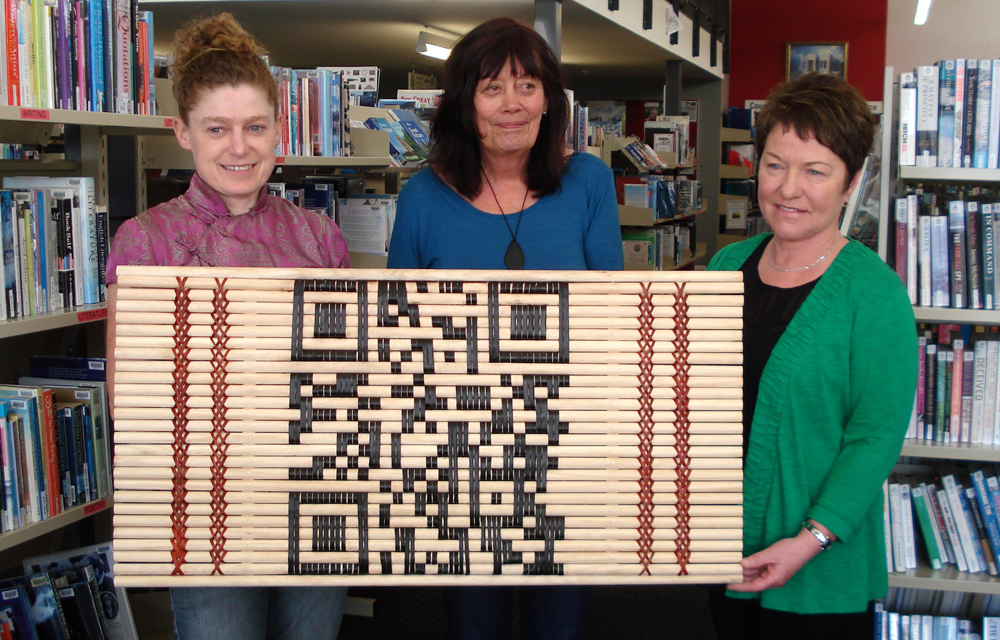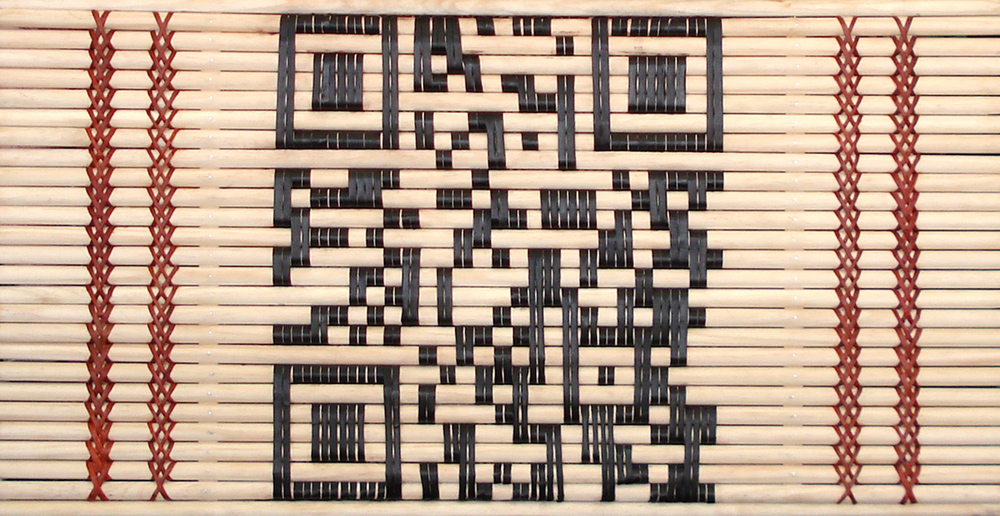Pattern Recognition
Two of the most important themes in contemporary electronic arts practice are those of network communication and of engagement across cultural borders. Pattern Recognition is the result of a collaboration between Aroha Timoti-Coxon a weaver based in Hokitika and Vicki Smith an artist based in Harihari.
Together they constructed a work of contemporary culture, a QR code created through the woven art of tukutuku. While QR codes which can trigger the opening of web pages and web based media may seem distant from traditional Maori weaving, the two have interconnections.
Both are forms of storytelling that are encoded in a formal visual language of positive and negative. The ‘binary code’ of weaving and the information held by a QR image are similar to the codified stories told through the patterns of tukutuku. In terms of digital heritage, it is acknowledged that an important historical step in the development of intelligent machines (which later on became computers), was the Jacquard weaving loom.
The process of creating tukutuku can also be described as a conversation between two weavers, who pass the ara (thread) to one another from different sides of the panel. This is mirrored in the collaboration of Smith and Timoti-Coxon, and also in the connection of the QR code to the internet.
The location of the work in the Westland library highlights the link the library has to the World Wide Web as the biggest repository of ‘woven information’ [Tukutuku-Ao-Whanui]. Creating a working QR code at a scale of one metre high using tukutuku method, required experimentation as the demands for QR codes are precise.




